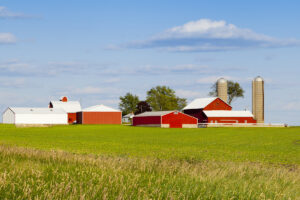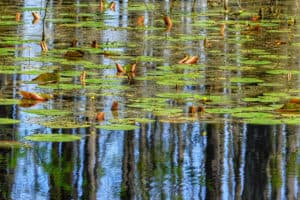Of America’s 75 million single-family detached homes, the overwhelming majority were not built to be examples of environmental correctness.
New homes should be, say Avrim and Vicki Topel in Green Beginnings: The Story of How We Built Our Green & Sustainable Home.
The Topels’ new house uses materials and building practices that conform to strict environmental guidelines established by a private rule-making and inspection organization. It was built to be low-maintenance and cheap to operate. Up-front cost was less a consideration than long-term savings. Looks were very important.
Green Beginnings is a helpful memoir of a 21-month project that introduces the reader to the process of constructing a house which qualifies for LEED (Leadership in Energy and Environmental Design) certification from the United States Green Building Council (USGBC). The USGBC provides information and links to suppliers and practitioners.
LEED certification demands that both the building process and the end product comply with detailed rules about materials and practices in six areas: energy and atmosphere, water usage, sustainable sites, materials and resources, indoor environmental quality, and location and linkages. An inspection, costing between $500 and $5,000, judges whether the project complies sufficiently to gain certification.
Several years ago, the Topels wanted a change. They were living on seven acres with five in mowed-weekly lawn with 8,000 square feet of finished space on four floors. They wanted to downsize to reduce maintenance and upkeep costs.
They could not find a low-maintenance, energy-efficient smaller home outside of Philadelphia. They chose not to green up an existing house, including their own. So they sold and built smaller next door on a lot they owned.
They started out wanting one floor, a timber-frame great room with a floor-to-ceiling stone fireplace, solar panels and a geothermal heat-exchanger. They budgeted between $750,000 and $1.5 million, assuming a cost of between $250 and $300 per square foot for 3,000 to 4,000 square feet.
Their builder introduced them to green products and the idea of sustainable building. The Topels converted on the spot. Their house became a “deeply transformational and major life-changing event…that awakened us spiritually.”
They ended up with a T-shaped structure that incorporated prefabricated components and some timber-framing. Solar and geothermal were dropped.
Their architect wanted to develop a line of sustainable homes in the $600,000 to $2-million-dollar price range, so he saw their project as the chance to make a green statement. In their words: “As far as the professionals [builder, architect, project manager, engineer, landscape architect] were concerned, a LEED project was what everyone was chomping at the bit for.” My experience with architects who want to use a client’s money to make a statement for themselves has not been good; the Topels were luckier.
Anyone can build with green products and use these principles and practices without becoming certified.
The only economic benefit of achieving LEED certification that I found in the Topels’ argument was “…our gut told us that…certification was perhaps the single most meaningful action step we could pursue in confirming the monetary value and elevating the resale value of our new home.” No proof of higher resale value for LEED homes was offered beyond the intestinal.
The cost-effectiveness of LEED practices in the Topel house is not addressed. How long will it take for super-duper, energy-efficient windows to pay for themselves in monthly savings as against the vanilla Andersen or Pella?
Green options have to make economic sense for cheap schnooks like me to adopt them. At this time, some options do; some don’t; some might; some are operationally chancy; and some are too new to judge.
The Topels show how they built greenly and expensively, not greenly and cost-effectively. My guess is — a guess because they don’t say — that their LEED house cost more than $1 million. The average 2008 sales price of a home was $292,000. How much LEED stuff can an average buyer afford at the start even if it makes sense in the long run?
Green choices, like all others, range from cost-effective to ridiculously expensive. LEED allows a counter top to be made from wood, granite or jade as long as each is produced sustainably. The Topels might have used nearby locust for outdoor decking instead of Brazilian mahogany. The mahogany passed LEED muster because it was grown and harvested according to Forest Stewardship Council standards, despite the environmental cost of lugging it from Brazil. Were there not cheaper and as-green alternatives to the Douglas Fir used in the timber framing and the cypress used for exterior siding, neither of which appear to thrive around Philadelphia?
I’ve always felt just a little uncomfortable with indulgences justified by their greenness–like a hybrid Humvee used for grocery shopping. Is a hand-made, “oversized copper front door” a green alternative to plebian wood or simply a beautiful object the Topels wanted and could afford? I don’t quarrel with self-indulgence much any more now that my wife insists that I buy a new pair of jeans every three or four years. But contrived reasoning still fouls my admittedly deteriorating propeller.
Green Beginnings is weak when it comes to disclosing dollars and cents. The reader is rarely told how much different options cost installed; how much the conventional and less-green options cost; how the dollars net out from up-front cost and long-term savings for the greenest choice compared with others; what the pay-back time is for each “cost-saving” green system; and the square-foot cost of building one way against others.
Readers would also be helped by a floor plan and a detailed site plan.
The Topels rejected geothermal heating and cooling because it cost three times as much as a conventional forced-air system and more than the radiant system they chose. Other examples of weighing costs against green benefits would have been informative.
Some green ideas are cost-effective substitutes for conventional products and practices, and others are not. The Topels don’t compare green apples to other colors since green had become their spiritual core.
The economic case for green construction has to be based on the combination of initial expense plus long-term savings. If the up-front cost is too high, the savings over many years won’t make the investment economically sensible. This is why suburbs are not festooned with photovoltaic panels.
The Topels are among the first to erect a green trophy house. They write that “…to be able to tell our guests that the trim in the house actually came from the poplar trees on our property was priceless.” They agreed to make part of their roof vegetative even though it doubled the square-foot cost, because “the benefits of having a green roof are almost as impressive as the conversation value that a green roof brings with it.” We now have a new set of bragging rights.
Green Beginnings, the book, is one component of the Topels’ new business, which is showing what they did. I wish them well and hope they are allowed to write off the entire cost of their new house as a business expense.
But those who are inclined to join them on the LEEDing edge should acquire a lot more information and help before heading into this semi-charted frontier.
This content may not be used or reproduced in any manner whatsoever, in part or in whole, without written permission of LANDTHINK. Use of this content without permission is a violation of federal copyright law. The articles, posts, comments, opinions and information provided by LANDTHINK are for informational and research purposes only and DOES NOT substitute or coincide with the advice of an attorney, accountant, real estate broker or any other licensed real estate professional. LANDTHINK strongly advises visitors and readers to seek their own professional guidance and advice related to buying, investing in or selling real estate.









Add Comment